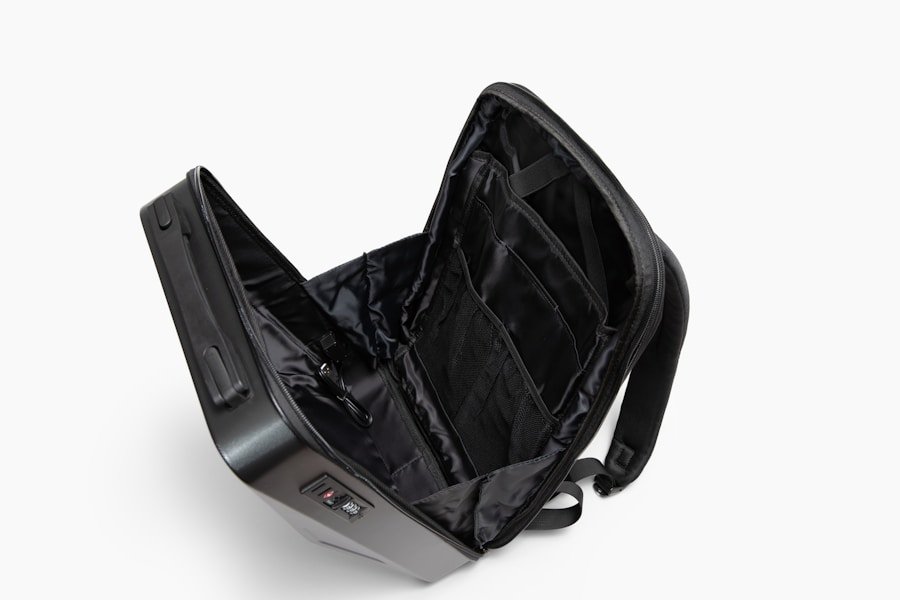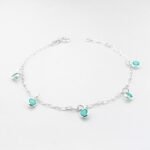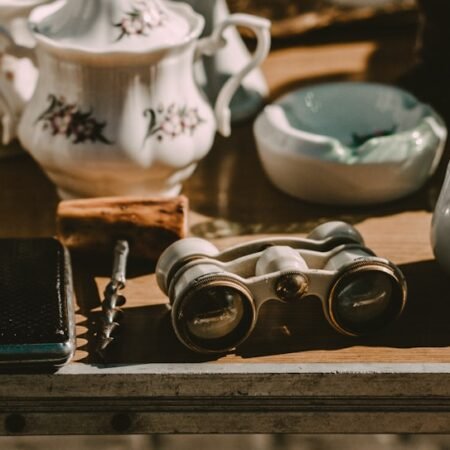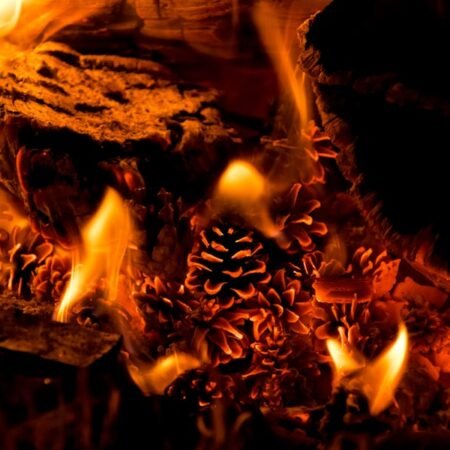When it comes to birdwatching on your camping trip, having the right pair of binoculars can make all the difference. There are a few key factors to consider when choosing the best binoculars for birdwatching. First, you’ll want to consider the magnification and objective lens size.
A good rule of thumb is to look for binoculars with a magnification of 7x to 10x and an objective lens size of 42mm. This will provide a good balance between magnification and light-gathering ability, making it easier to spot and identify birds in the field. Another important factor to consider is the field of view.
A wider field of view will make it easier to locate and track birds as they move through their natural habitat. Look for binoculars with a field of view of at least 300 feet at 1000 yards. Additionally, consider the weight and size of the binoculars, as you’ll likely be carrying them with you for long periods of time.
Opt for a lightweight and compact pair that won’t weigh you down on your outdoor adventures. Finally, consider the quality of the optics and the durability of the binoculars. Look for models with high-quality glass and coatings to ensure a clear and bright image, as well as a rugged construction that can withstand the rigors of outdoor use.
In conclusion, when choosing the right binoculars for birdwatching on your camping trip, consider factors such as magnification, objective lens size, field of view, weight and size, optics quality, and durability. By taking these factors into account, you can find the perfect pair of binoculars to enhance your birdwatching experience in the great outdoors.
Key Takeaways
- Choose binoculars with a magnification of 8x to 10x and an objective lens diameter of 42mm for birdwatching on a camping trip.
- Use a tripod or monopod to stabilize your binoculars and reduce hand fatigue while birdwatching.
- Look for field marks such as color patterns, size, and shape to identify common bird species in different environments.
- Practice using your binoculars in the field by adjusting the focus, using the diopter, and scanning for birds efficiently.
- Enhance your birdwatching experience with binoculars by keeping a field journal, joining a birdwatching club, and participating in citizen science projects.
Essential Tips for Birdwatching on a Camping Trip
Birdwatching on a camping trip can be a rewarding and enjoyable experience, but it requires some essential tips to make the most of your time in the field. First and foremost, it’s important to do some research before you head out. Familiarize yourself with the common bird species in the area where you’ll be camping, as well as their habitats and behaviors.
This will help you know what to look for and where to find it once you’re out in the field. Once you’re in the field, it’s important to be patient and observant. Birds can be elusive creatures, so take your time and scan the area carefully with your binoculars.
Look for movement, listen for calls and songs, and pay attention to any signs of bird activity such as nests or feeding areas. It’s also helpful to use field guides or birding apps to aid in identification and learn more about the birds you encounter. In addition, it’s important to be respectful of the birds and their habitats.
Avoid disturbing nesting sites or sensitive areas, and observe from a distance to minimize your impact on the wildlife. Finally, don’t forget to bring along some essential gear such as a field guide, notebook and pen for taking notes, and a camera to capture any memorable sightings. By following these essential tips, you can make the most of your birdwatching experience on your camping trip.
Identifying Common Bird Species in Different Environments
One of the most exciting aspects of birdwatching on a camping trip is the opportunity to observe a wide variety of bird species in different environments. Whether you’re camping in a forest, by a lake, or in a desert, each habitat offers its own unique birdwatching opportunities. In forested areas, you may encounter species such as woodpeckers, warblers, and thrushes, while lakes and wetlands are home to waterfowl like ducks, herons, and egrets.
In open grasslands or deserts, you might spot raptors such as hawks and eagles, as well as ground-dwelling birds like quail and larks. To identify common bird species in different environments, it’s important to pay attention to key characteristics such as size, shape, coloration, behavior, and habitat preferences. Field guides and birding apps can be invaluable tools for learning about the birds you’re likely to encounter in specific habitats.
Additionally, consider joining local birdwatching groups or guided tours to gain insight from experienced birders who are familiar with the area. By familiarizing yourself with the common bird species in different environments and learning how to identify them based on their unique characteristics, you can enhance your birdwatching experience on your camping trip and gain a deeper appreciation for the diversity of avian life in nature.
Best Practices for Using Binoculars in the Field
| Topic | Metrics |
|---|---|
| Types of Birds | 50+ species |
| Binoculars Magnification | 8x – 10x |
| Best Time for Birdwatching | Early morning or late afternoon |
| Popular Birdwatching Locations | Forests, wetlands, and open fields |
| Tips for Beginners | Patience, quietness, and observation |
Using binoculars effectively in the field is essential for successful birdwatching on your camping trip. There are several best practices to keep in mind when using binoculars to observe birds in their natural habitat. First and foremost, it’s important to adjust your binoculars properly for your eyesight.
Most binoculars have a diopter adjustment that allows you to fine-tune the focus for each eye individually. Take the time to adjust this setting so that the image through the binoculars appears sharp and clear. In addition, it’s important to use proper technique when scanning for birds with your binoculars.
Start by using your naked eye to locate a bird or movement in the distance, then raise your binoculars to your eyes and bring the bird into focus. Keep both eyes open while using your binoculars, as this will help reduce eye strain and maintain your depth perception. When tracking a moving bird, use smooth and deliberate movements with your binoculars to keep the bird in view.
Finally, it’s important to practice good field etiquette when using binoculars in the presence of other birdwatchers. Be mindful of others’ space and avoid blocking their view with your own equipment. Additionally, be respectful of the birds themselves by observing from a distance and minimizing any disturbance to their natural behavior.
By following these best practices for using binoculars in the field, you can maximize your birdwatching experience on your camping trip.
How to Enhance Your Birdwatching Experience with Binoculars
There are several ways to enhance your birdwatching experience with binoculars on your camping trip. One effective technique is to use your binoculars in combination with other tools such as field guides or birding apps. When you spot a bird that you’re not familiar with, use your binoculars to get a closer look at its key features such as coloration, markings, and behavior, then consult your field guide or app to help identify the species.
Another way to enhance your birdwatching experience with binoculars is to practice field sketching or note-taking. Use your binoculars to observe birds closely and take note of their unique characteristics such as bill shape, wing patterns, or vocalizations. Sketching or jotting down notes can help reinforce your observations and improve your ability to identify birds in the future.
Additionally, consider using your binoculars to observe birds during different times of day or in different weather conditions. Birds can exhibit different behaviors and appearances depending on factors such as light levels, temperature, or wind conditions. By using your binoculars to observe birds in a variety of situations, you can gain a more comprehensive understanding of their natural history and behavior.
In conclusion, there are several ways to enhance your birdwatching experience with binoculars on your camping trip, including using them in combination with field guides or apps, practicing field sketching or note-taking, and observing birds in different conditions. By incorporating these techniques into your birdwatching routine, you can deepen your appreciation for the avian life around you and improve your skills as a birder.
Birdwatching Etiquette and Conservation Practices
When engaging in birdwatching on your camping trip, it’s important to practice good etiquette and conservation practices to minimize your impact on the birds and their habitats. One key aspect of birdwatching etiquette is to observe from a distance and avoid disturbing nesting sites or sensitive areas. Use your binoculars to get a close-up view of birds without intruding on their space or causing them undue stress.
Additionally, be mindful of other birdwatchers in the area and respect their space while observing birds. Avoid blocking others’ views with your own equipment or making excessive noise that could disrupt their experience. If you encounter other birdwatchers who are observing a rare or sensitive species, be considerate and give them space to enjoy their sighting without interference.
Conservation practices are also important when engaging in birdwatching on your camping trip. Be sure to follow all local regulations regarding wildlife observation and respect any restricted areas or seasonal closures that are in place to protect nesting birds or sensitive habitats. Additionally, consider contributing to conservation efforts by supporting organizations that work to protect birds and their habitats through research, education, and habitat restoration initiatives.
By practicing good etiquette and conservation practices while birdwatching on your camping trip, you can help ensure that both the birds and their habitats remain healthy and undisturbed for future generations of birdwatchers to enjoy.
Resources for Furthering Your Birdwatching Skills and Knowledge
If you’re interested in furthering your birdwatching skills and knowledge beyond your camping trip, there are many resources available to help you expand your understanding of avian life and improve your abilities as a birder. One valuable resource is joining local birdwatching groups or clubs, where you can connect with experienced birders who can offer guidance and support as you develop your skills. Another valuable resource for furthering your birdwatching skills is attending workshops or seminars led by expert birders or naturalists.
These events often cover topics such as bird identification, behavior observation techniques, and habitat conservation practices that can enhance your abilities as a birder. In addition, consider seeking out online resources such as websites, forums, or social media groups dedicated to birdwatching. These platforms can provide access to a wealth of information about bird identification, migration patterns, conservation issues, and more.
Many online resources also offer opportunities to connect with other birdwatchers from around the world and share experiences and knowledge. Finally, consider investing in educational materials such as field guides, books, or online courses that can help deepen your understanding of birds and their habitats. By taking advantage of these resources for furthering your birdwatching skills and knowledge, you can continue to grow as a birder long after your camping trip has ended.
In conclusion, there are many resources available for furthering your birdwatching skills and knowledge beyond your camping trip, including local birdwatching groups or clubs, workshops or seminars led by expert birders or naturalists, online resources such as websites or forums dedicated to birdwatching, and educational materials such as field guides or books. By utilizing these resources, you can continue to expand your understanding of avian life and improve your abilities as a birder for years to come. In conclusion, birdwatching with binoculars on your camping trip can be an enriching experience that allows you to connect with nature in a unique way.
By choosing the right binoculars for birdwatching, following essential tips for observing birds in different environments, identifying common species in the field using best practices for using binoculars effectively enhancing your experience with additional tools practicing good etiquette and conservation practices while seeking out resources for furthering your skills and knowledge you can make the most of your birdwatching adventures in the great outdoors. Whether you’re a seasoned birder or new to the hobby, there’s always something new to discover when it comes to observing avian life in its natural habitat. So grab your binoculars and head out into nature for an unforgettable birdwatching experience on your next camping trip!
FAQs
What are the best binoculars for birdwatching on a camping trip?
When choosing binoculars for birdwatching on a camping trip, it’s important to look for ones with a magnification of 8x to 10x and an objective lens diameter of 42mm to 50mm. This will provide a good balance of magnification and light-gathering ability for viewing birds in various lighting conditions.
How should I adjust my binoculars for birdwatching?
To adjust your binoculars for birdwatching, start by adjusting the eyecups to the correct position for your eyes. Then, use the central focusing wheel to bring the bird into sharp focus. If your binoculars have a diopter adjustment, use it to fine-tune the focus for your individual eyesight.
What are some tips for birdwatching with binoculars on a camping trip?
When birdwatching with binoculars on a camping trip, it’s important to move slowly and quietly to avoid scaring away the birds. Look for movement or listen for bird calls to help locate them. Try to observe birds from a distance to avoid disturbing their natural behavior.
How can I protect my binoculars while birdwatching on a camping trip?
To protect your binoculars while birdwatching on a camping trip, consider using a padded carrying case or harness to keep them secure and cushioned. Avoid exposing them to extreme temperatures or moisture, and clean the lenses regularly to maintain clear visibility.
What are some common birds to look for while birdwatching on a camping trip?
While birdwatching on a camping trip, keep an eye out for common birds such as robins, blue jays, cardinals, woodpeckers, and sparrows. Depending on your location, you may also spot raptors, waterfowl, or migratory birds during certain times of the year.













